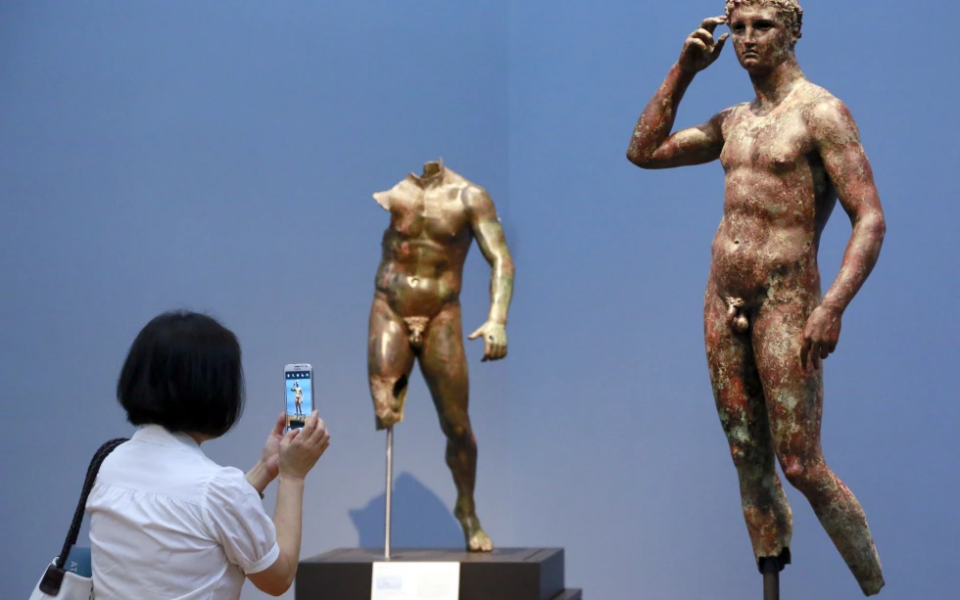European court upholds Italy’s right to seize prized Greek bronze from Getty Museum, rejects appeal

A European court on Thursday upheld Italy’s right to seize a prized Greek statue from the J. Paul Getty Museum in California, ruling that Italy was justified in trying to reclaim an important part of its cultural heritage and rejecting the museum’s appeal.
The European Court of Human Rights, or ECHR, determined that Italy’s decades-long efforts to recover the “Victorious Youth” statue from the Malibu-based Getty were not disproportionate.
“Victorious Youth,” a life-sized bronze dating from 300 BC to 100 BC, is one of the highlights of the Getty’s collection. Though the artist is unknown, some scholars believe it was made by Lysippos, Alexander the Great’s personal sculptor.
The bronze, which was pulled from the sea in 1964 by Italian fishermen, was purchased by the Getty in 1977 for $4 million and has been on display there ever since.
The Getty had appealed to the European court after Italy’s high Court of Cassation in 2018 upheld a lower court’s confiscation order. The Getty had argued that its rights to the statue, under a European human rights protocol on protection of property, had been violated by Italy’s campaign to get it back.
The court ruled Thursday that no such violation had occurred.
“This is not just a victory for the Italian government. It’s a victory for culture,” said Maurizio Fiorilli, the Italian prosecutor who for years spearheaded Italy’s claims to recover its looted antiquities and, in particular, the Getty bronze.
The Getty has long defended its right to the statue, saying Italy had no legal claim to it.
Among other things, the Getty had argued that the statue is of Greek origin, was found in international waters and was never part of Italy’s cultural heritage. It has cited a 1968 Court of Cassation ruling that found no evidence that the statue belonged to Italy.
Italy argued the statue was indeed part of its own cultural heritage, that it was brought to shore by Italians aboard an Italian-flagged ship and was exported illegally, without any customs declarations or payments.
[AP]





